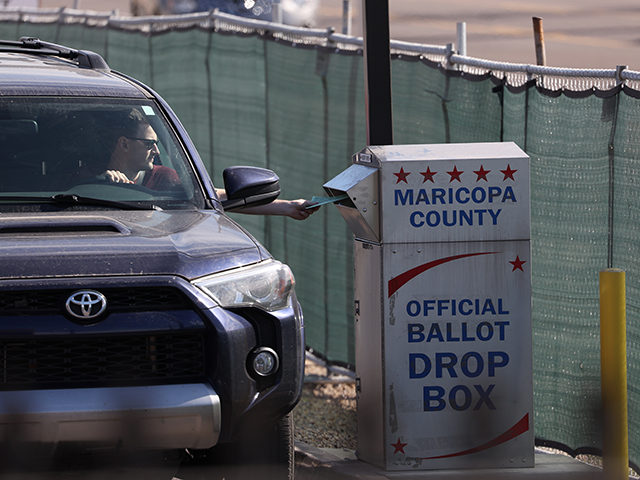
Last week, a survey conducted by the Heartland Institute and Rasmussen Research found that one in five voters admit to having committed some sort of vote-by-mail violation in the 2020 presidential election.
Because the issues of voting integrity and vote fraud are so important—central, in fact, to our democratic republic—it’s worth dwelling on the findings, always eyeing a possible remedy.
We can begin with a caveat that this is a self-reported poll. And so the confessed violations would not necessarily feature in the Heritage Foundation’s ever-growing database of proven vote fraud.
Secondly, some of the violations seem small potatoes. For instance, 21 percent of mail-in voters admitted that they filled out a ballot for a friend or family member. Assuming the absence of fraud (marking a different name than the would-be voter wanted) or duress (forcing a different vote), is such collaborative balloting a big deal?
On the other hand, 17 percent of mail-in voters said that they voted in a state where they are “no longer a permanent resident.” That is a big deal.
The Census Bureau reports that 43 percent of voters voted by mail in 2020. And some 154.6 million people voted in the November 2020 presidential election (although there were plenty of other elections in 2020, including primaries). But for what it’s worth, 43 percent of 154.6 million is 66.4 million. And so if we were to say, per the Heartland/Rasmussen data, that 17 percent of those votes were cast improperly, that suggests a stupefying 11.3 million bum votes in 2020.
Now we can recall that Joe Biden received 7,059,526 more votes than Donald Trump. Indeed, if we drill down further, we find that a mere 44,000 votes, scattered across three swing states (Arizona, Georgia, and Wisconsin) spelled the difference between a Biden electoral college victory and a Trump electoral college victory.
But even as we grapple with the full implications of vote fraud, we must realize that we’re deep into contingencies and what-ifs. There’s no way to know with certainty what happened and how exactly those voters were distributed or maybe redistributed.
About the only thing we do know with certainty is that Democrats have been quicker to grasp the importance of seizing the means of electoral production. As Stalin is said to have said, “It doesn’t matter who votes, it matters who counts the votes.” Back in 2006, progressive Democrats launched the Secretary of State Project to make sure that the chief election offices in the 50 states were all in “good hands.”
In September 2020, this author and Breitbart News’ Rebecca Mansour warned of the Democrats’ potential for vote fraud and other kinds of actions—some legal, some not—in the upcoming election. And that was before we learned that tech mogul Mark Zuckerberg had donated more than $400 million to Democratic-leaning groups who “helped” vote-counting in 47 states, including the five states (Arizona, Georgia, Michigan, Pennsylvania, and Wisconsin) that swung to Biden in 2020 from Trump in 2016.

Facebook CEO Mark Zuckerberg arrives for the 8th annual Breakthrough Prize awards ceremony at NASA Ames Research Center in Mountain View, California, on November 3, 2019. (JOSH EDELSON/AFP via Getty Images)
Needless to say, all the players and financiers deny that they wrongly shifted victory to the Democrats. Although for our part, we can say the proof that Zuckerberg’s money was a “mission: accomplished” is in this December 8, 2020 NPR headline: “How Private Money From Facebook’s CEO Saved The 2020 Election.”
Moreover, Zuckerberg’s vote-moving money was not alone. The right-minded diggers at the Capital Research Center (CRC) have documented hundreds of millions in additional campaign spending. CRC’s pungent headline: “Sixteen Thirty Fund Carpet-Bombed the 2020 Election with Leftist ‘Dark Money.’” To think that all that money did not affect the election is an insult to the aptitude of the Democratic donors and activists. Is it really plausible to think that all those billions sere spent for nothing?
Meanwhile, the 2022 elections tell us that mail-in voting is still going strong. According to the federal Election Assistance Commission:
States reported transmitting 61,460,139 mail ballots for the 2022 general election, of which 36,683,450 were returned by voters, for a rate of 59.7% of transmitted mail ballots being returned by voters.22 Of the mail ballots that were returned by voters, 35,718,700 were reported as being counted and 549,824 were reported as being rejected.
The 2022 midterms were, as we know, a disappointment for Republicans.
So, now what of the future? Some Republicans say that vote-by-mail should be ended. Yet at the same time, some Democrats say it should be expanded. Either way, is it possible to guarantee honest vote-by-mail elections? Many are thinking hard about this question, and their solutions have to revolve around verifying identity and intentionality: How do we know that Smith is a legit voter and that Smith’s vote was honestly counted? However, such verification efforts collide with concerns about personal privacy—and also, let’s say it, with the desire of some to preserve vote fraud as a tactic for winning elections. (This author has suggested that the only surefire solution to vote fraud is to link, by name, the vote and the voter; although for now, at least, that seems to be too far outside the Overton Window.)

A voter drops his ballot into a drop box at the Maricopa County Tabulation and Election Center on November 7, 2022, in Phoenix, Arizona. (Justin Sullivan/Getty Images)
It seems a cinch that vote-by-mail is here to stay. So, for the near term, the most likely outcome is a standoff, as the 25 red states—defined as states that Trump carried in both 2016 and 2020—square off against the 18 or so blue states (with the remaining handful being purple). That is, in their states, Republicans will adopt the vote-counting rules that they think best, and in their states, Democrats will adopt the system that they think best. And if Republicans think that the Democrats’ system is an invitation to fraud, well, Democrats have proven that they don’t care what Republicans think. And as for possible federal action, it’s likely that red will check blue, and blue will check red.
Looking further ahead, we’ll see more of what Democrats think when blue states move to online voting, vote-by-app.
Yes, the Tech Lords have a dream.





